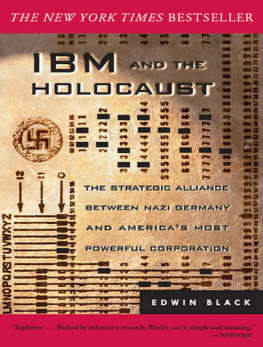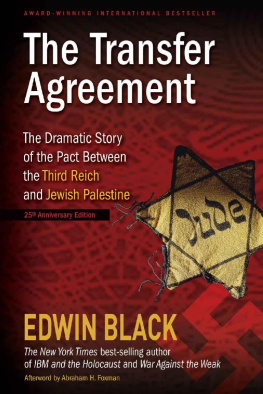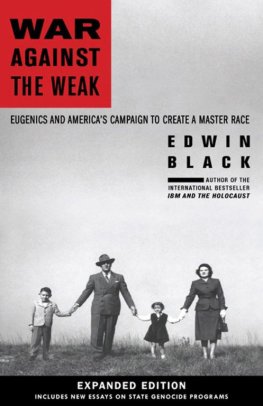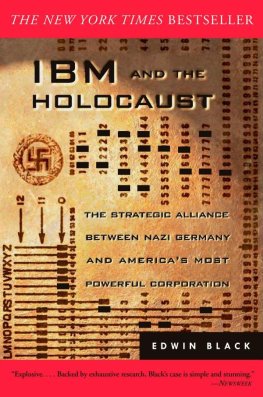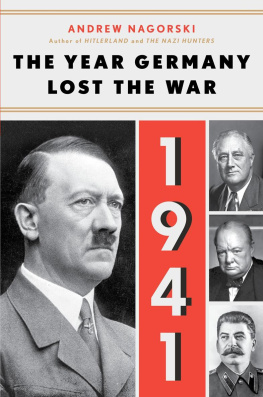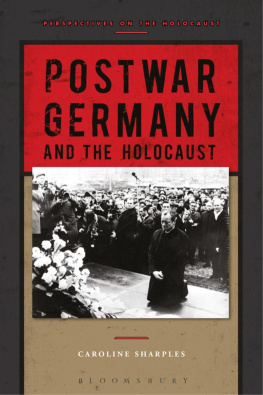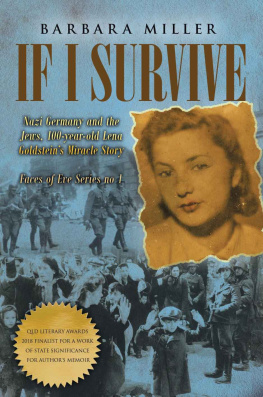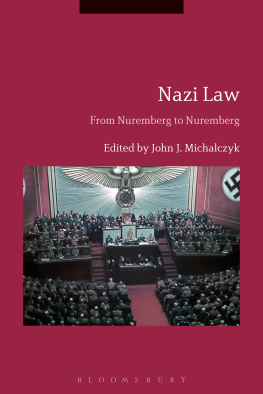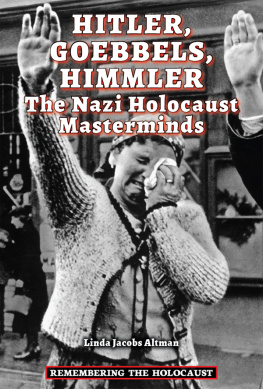IBM and the Holocaust
The Strategic Alliance between Nazi Germany and Americas Most Powerful Corporation
by
Edwin Black
2001
 All Your Books Are Belong To Us !
All Your Books Are Belong To Us ! http://c3jemx2ube5v5zpg.onion
IBM and the Holocaust
The Strategic Alliance between Nazi Germany and Americas Most Powerful Corporation
Copyright 2001 Edwin Black
Copyright 2001, 2002, 2009 by Edwin Black
Published by Dialog Press, Washington, DC
Originally published in hardcover by Crown Publishers in 2001
ISBN 9780914153108
Second Paperback Edition
IBM and the Holocaust is the stunning story of IBM's strategic alliance with Nazi Germany -- beginning in 1933 in the first weeks that Hitler came to power and continuing well into World War II. As the Third Reich embarked upon its plan of conquest and genocide, IBM and its subsidiaries helped create enabling technologies, step-by-step, from the identification and cataloging programs of the 1930s to the selections of the 1940s.
Only after Jews were identified -- a massive and complex task that Hitler wanted done immediately -- could they be targeted for efficient asset confiscation, ghettoization, deportation, enslaved labor, and, ultimately, annihilation. It was a cross-tabulation and organizational challenge so monumental, it called for a computer. Of course, in the 1930s no computer existed.
But IBM's Hollerith punch card technology did exist. Aided by the company's custom-designed and constantly updated Hollerith systems, Hitler was able to automate his persecution of the Jews. Historians have always been amazed at the speed and accuracy with which the Nazis were able to identify and locate European Jewry. Until now, the pieces of this puzzle have never been fully assembled. The fact is, IBM technology was used to organize nearly everything in Germany and then Nazi Europe, from the identification of the Jews in censuses, registrations, and ancestral tracing programs to the running of railroads and organizing of concentration camp slave labor.
IBM and its German subsidiary custom-designed complex solutions, one by one, anticipating the Reich's needs. They did not merely sell the machines and walk away. Instead, IBM leased these machines for high fees and became the sole source of the billions of punch cards Hitler needed.
Contents
[]
"Recollection of Hanna Levy-Hass" in Eberhard Kolb, Bergen-Belsen: From "DetentionCamp" to Concentration Camp, 1943-45, trans. Gregory Claeys and Christine Lattke (Gottingen: Vandenhoeck & Ruprecht, 1985), p. 66; see Encyclopaedia Judaica, s.v. "Bergen-Belsen," p. 611; Kolb, pp. 29, 41, 94, 98, as well as the photos; General Glyn-Hughes, Cite in Le grand livre des temoins, FNDIRP, Ramsey, 1995, p. 291; also see photos, The Nizkor Project, www.nizkor.org; Judith Jaegermann, "Memories of My Childhood in the Holocaust," Oral History in A History of Jews in Hamburg, Hamburg University, www.rrz.uni-hamburg.
[]
Hadassah Rosensaft Collection, United States Holocaust Memorial Museum (USHMM) Photo Archives; Encyclopaedia Judaica, s.v. "Bergen-Belsen , " p. 611; Kolb, p. 29.
[]
Hadassah Rosensaft crematorium photo, April 28, 1945, USHMM.
[]
Encyclopaedia Judaica, s.v. "Bergen-Belsen," p. 612; Brigadier Hugh Llewelyn Glyn-Hughes in "Excerpts from The Belsen Trial, Pt. 2 of 5: Testimony Concerning Water andFood," The Nizkor Project, www.nizkor.org; see Raymond Philips, ed., The Trial of JosefKramer and 44 Others: The Belsen Trial (London: William Hodge and Co., 1949); Kolb, p. 40.
[]
Papers of Rudolf Martin Cheim, Joodsche Raad Voor Amsterdam, p. 26, YIVO RG804; Kolb, p. 29; see Encyclopaedia Judaica, s.v. "Bergen-Belsen , " p. 611.
[]
Papers of Rudolf Martin Cheim, Joodsche Raad Voor Amsterdam, p. 26, YIVO RG804.
[]
Papers of Rudolf Martin Cheim, Joodsche Raad Voor Amsterdam, p. 26, YIVO RG804.
[]
Papers of Rudolf Martin Cheim, Joodsche Raad Voor Amsterdam, p. 26, YIVO RG804; see NA RG242/338, T1021, Roll 5, Frame 126.
[]
Papers of Rudolf Martin Cheim, Joodsche Raad Voor Amsterdam, pp. 26-27, YIVO RG804; see NA RG242/338, T1021, Roll 5, Frame 126; Testimony of and Concerning Irma Grese in "Excerpts from The Belsen Trial, Pt. 5 of 5: The Trial of Adolf Eichmann, Session 101 (Pt. 3 of 4), The Nizkor Project, www.nizkor.org" ; Jamie McCarthy and Ken McVay, "The Meaning of Special Treatment, Pt. 1 of 3," Deceit and Misrepresentation: TheTechniques of Holocaust Denial, The Nizkor Project, www.nizkor.org; Raul Hilberg, Documents of Destruction: Germany and Jewry 1933-1945 (Chicago: Quadrangle Books, 1971), pp. 219-223.
[]
Papers of Rudolf Martin Cheim, Joodsche Raad Voor Amsterdam, p. 28, YIVO RG804.
[]
Papers of Rudolf Martin Cheim, Joodsche Raad Voor Amsterdam, pp. 27-28, YIVO RG804; Memo and Transfer List, Ravensbruck Concentration Camp Labor Deployment Office to Flossenburg Concentration Camp Labor Deployment Office, September 1, 1944, D II NA RG242/338, T1021 Reel 17.
[]
Operation of D II, IMT, 5:980-992; sound recording, Heinrich Himmler's Speech at Posen, October 4, 1943, NA RG238, PS 1919.
[]
Papers of Rudolf Martin Cheim, Joodsche Raad Voor Amsterdam, p. 27, YIVO RG804.
[]
Papers of Rudolf Martin Cheim, Joodsche Raad Voor Amsterdam, pp. 27-28, YIVO RG804.
[]
Papers of Rudolf Martin Cheim, Joodsche Raad Voor Amsterdam, p. 26, YIVO RG804.
[]
Thomas J. Watson, Jr., and Peter Petre, Father, Son & Co.: My Life at IBM and Beyond (New York: Bantam Books, 1990), pp. 29-30; CSDIC, "Secret Report: PW Intelligence Bulletin No. 2/57," April 25, 1945, p. 4, NA RG226; "Deutsche Hollerith Maschinen: Confidential Report 242," p. 8, submitted by Harold J. Carter, December 8, 1943, Department of Justice, War Division, Economic Warfare Section, NA RG60.
[]
Edwin Black, The Transfer Agreement: The Dramatic Story of the Pact Between the Third Reich& Jewish Palestine (New York: Macmillan, 1984; Washington, DC: Dialog Press, 1999), pp. 3-7, 26; Letter, Thomas J. Watson to Dr. Hjalmar Schacht, August 18, 1937, IBM Files.
[]
Peter N. Stearns and John H. Hinshaw, eds., The ABC-CLIO World History Companion tothe Industrial Revolution (Santa Barbara, Calif.: ABC-CLIO, 1996), p. 223.
[]
From V. Hollerith, "Biographical Sketch," interviews with Madeline and George Hollerith, January 19, 1972, and May 18, 1970, cited in Geoffrey D. Austrian, Herman Hollerith:Forgotten Giant of Information Processing (New York: Columbia University Press, 1982), p. 350.
[]
Emerson W. Pugh, Building IBM: Shaping an Industry and Its Technology (Cambridge: The MIT Press, 1995), pp. 2-3; Robert Sobel, IBM: Colossus in Transition (New York: Truman Talley Books, 1981), p. 14; Austrian, p. 4; Saul Engelbourg, International Business Machines: A Business History (Arno Press, 1976), pp. 2-3, and author's typescript.
[]
Sobel, p. 14.
[]
Sobel, p. 14.
[]
Sobel, p. 14; see Austrian, p. 15.
[]
Austrian, pp. 6, 22, 40-42; see Pugh, p. 11.
[]
Sobel, pp. 13-14; Pugh, pp. 1-3; 17; Austrian, pp. 82-83, 124-141.
[]
Pugh, pp. 12-13.
[]
Austrian, pp. 58, 69.

